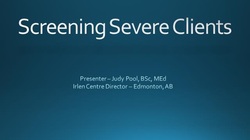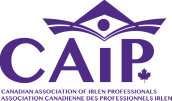|
It's not too late to register for this workshop. Email [email protected] with any questions. Membership fees have been reduced. If you joined in 2014 your membership is now valid to the end of 2015. Check out the updates fees under memberships. If you are uncertified or not active as a screener you can join as an associate or affiliate. Email with any questions!
Irlen Screener Certification Workshop
August 19 – 21, 2014 Screener Certification is an intensive training session for qualified persons who wish to be licensed to test for Irlen Syndrome. Licensed screeners are able to recognize and test for Irlen Syndrome, determine which coloured overlays reduce symptoms, recommend classroom and home adaptations and give presentations about Irlen Syndrome. Certified Irlen Screeners are part of an International Network of professionals who help maximize educational, work, and daily activity performance for children and adults with reading problems, ADD/ADHD, chronic migraines/headaches, light sensitivity, anxieties, autism and sensory processing disorders. This Workshop is offered to: Teachers, Psychologists, Counselors, Adult Literacy Teachers, Health Professionals, Speech-Language Pathologists, Occupational Therapists, Learning Specialists and Educational Therapists. An undergraduate degree, teaching credential, graduate degree or appropriate license is required. Recommendation: read both Helen Irlen’s Reading by the Colors and The Irlen Revolution prior to training. (Available from Reading & Writing Consultants, Inc at cost.) Trainees must complete 3 practice screenings to complete certification requirements. Dates: August 19 – 21st, 2014 Time: Aug. 19th-7:00 pm to 9:00 pm Aug. 20th, 21st-9:00 am to 4:30 pm Location: Malcolm Tweddle School, 2340 Millbourne Rd W NW, Edmonton, AB T6K 1Y9 Cost: (includes GST):$800 (includes training & testing materials) For a registration form please call 780-439-8120 or e-mail [email protected] A brief resume and a cover letter explaining your interest in Irlen Syndrome will be required along with your registration form.  CAIP is pleased to offer our first webinar on May 12, 2014 at noon Alberta time. The webinar is available to members only. Those members unable to attend can view the webinar when they want through the Members only section of the CAIP website. As well, people who join CAIP later will have access to the webinar when their membership is active. We hope you enjoy this webinar and look forward to your feedback! Nola Stigings, CAIP President |

|
|